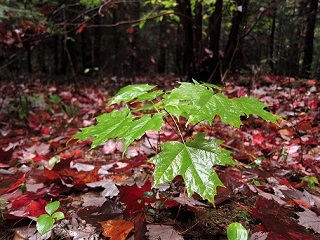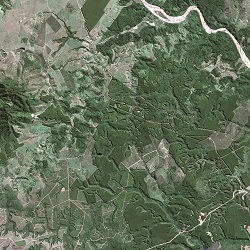Severity: 8192
Message: explode(): Passing null to parameter #2 ($string) of type string is deprecated
Filename: controllers/Indicators.php
Line Number: 152
Severity: 8192
Message: explode(): Passing null to parameter #2 ($string) of type string is deprecated
Filename: controllers/Indicators.php
Line Number: 152
Severity: 8192
Message: explode(): Passing null to parameter #2 ($string) of type string is deprecated
Filename: controllers/Indicators.php
Line Number: 151
Severity: 8192
Message: explode(): Passing null to parameter #2 ($string) of type string is deprecated
Filename: controllers/Indicators.php
Line Number: 152
Severity: 8192
Message: explode(): Passing null to parameter #2 ($string) of type string is deprecated
Filename: controllers/Indicators.php
Line Number: 151
Severity: 8192
Message: explode(): Passing null to parameter #2 ($string) of type string is deprecated
Filename: controllers/Indicators.php
Line Number: 152
Severity: 8192
Message: explode(): Passing null to parameter #2 ($string) of type string is deprecated
Filename: controllers/Indicators.php
Line Number: 151
Severity: 8192
Message: explode(): Passing null to parameter #2 ($string) of type string is deprecated
Filename: controllers/Indicators.php
Line Number: 152
Severity: 8192
Message: explode(): Passing null to parameter #2 ($string) of type string is deprecated
Filename: controllers/Indicators.php
Line Number: 151
Severity: 8192
Message: explode(): Passing null to parameter #2 ($string) of type string is deprecated
Filename: controllers/Indicators.php
Line Number: 152
Severity: 8192
Message: explode(): Passing null to parameter #2 ($string) of type string is deprecated
Filename: controllers/Indicators.php
Line Number: 151
Severity: 8192
Message: explode(): Passing null to parameter #2 ($string) of type string is deprecated
Filename: controllers/Indicators.php
Line Number: 152
Severity: 8192
Message: explode(): Passing null to parameter #2 ($string) of type string is deprecated
Filename: controllers/Indicators.php
Line Number: 151
Severity: 8192
Message: explode(): Passing null to parameter #2 ($string) of type string is deprecated
Filename: controllers/Indicators.php
Line Number: 152
Severity: 8192
Message: explode(): Passing null to parameter #2 ($string) of type string is deprecated
Filename: controllers/Indicators.php
Line Number: 152
Severity: 8192
Message: explode(): Passing null to parameter #2 ($string) of type string is deprecated
Filename: controllers/Indicators.php
Line Number: 152
Severity: 8192
Message: explode(): Passing null to parameter #2 ($string) of type string is deprecated
Filename: controllers/Indicators.php
Line Number: 151
Severity: 8192
Message: explode(): Passing null to parameter #2 ($string) of type string is deprecated
Filename: controllers/Indicators.php
Line Number: 152
Severity: 8192
Message: explode(): Passing null to parameter #2 ($string) of type string is deprecated
Filename: controllers/Indicators.php
Line Number: 151
Severity: 8192
Message: explode(): Passing null to parameter #2 ($string) of type string is deprecated
Filename: controllers/Indicators.php
Line Number: 152
Severity: 8192
Message: explode(): Passing null to parameter #2 ($string) of type string is deprecated
Filename: controllers/Indicators.php
Line Number: 151
Severity: 8192
Message: explode(): Passing null to parameter #2 ($string) of type string is deprecated
Filename: controllers/Indicators.php
Line Number: 152
Severity: 8192
Message: explode(): Passing null to parameter #2 ($string) of type string is deprecated
Filename: controllers/Indicators.php
Line Number: 151
Severity: 8192
Message: explode(): Passing null to parameter #2 ($string) of type string is deprecated
Filename: controllers/Indicators.php
Line Number: 152
Forest structure is the horizontal and vertical arrangement of trees in a forest, as well as the pattern of forest cover on the landscape. Healthy forests have a diversity of species at all different stages of growth.
Forest structure can be simple, complex, or somewhere in between . A forest with a simple structure will appear park-like. Trees may be evenly spaced apart and of a similar size and species. Conversely, a forest with a more complex structure will have trees of various sizes and species and unevenly spaced. On a landscape scale, a more desirable structure are forests that span a range of types and successional stages.
Forest structure provides genetic diversity throughout all dimensions of the forest and builds resilience during times of disturbance whether by pests, extreme weather event, fire, or harvesting. In extreme cases, if one species disappears, another is available to take its place. Further, a forest with greater structural and species diversity can supply more ecosystem services, like providing varied habitat and food to a range of wildlife, and supplying a more robust timber resource as markets change over time.
The Forest Indicators Dashboard includes data from various sources to evaluate structure, including data on tree regeneration, species and size diversity, as well as landscape-level measures, like forest patch size and forest cover.
- Forest Cover
- Forest cover is an assessment of how much total forest exists in Vermont. For a high score, total forest cover must remain stable over time.
- Regeneration

- Stand complexity
- Mean patch size

- Forest connectivity
- Forest connectivity is an assessment of how close forests are on the landscape. Forest that are widely spaced and have low connectivity mean that animals and plants cannot easily move between patches. Forest connectivity that does not change from year to year will contribute to a higher structure score.
- Stand Age Diversity
- Across our forests, we want a diversity of forest stand ages, with some forest stands being newly initiated and others having been in place for a long time. This provides us with a diversity of habitat for a range of wildlife, and resilience to varied change. For a higher score, the relative amount of forest by age class should remain stable over time.
- Species diversity
- Tree species diversity is calculated by the number of different tree species and the relative abundance of each species in the forest. As tree species diversity increases so do forests capabilities to support other biodiversity in the form of birds, animals, insects, and fungi. Further, more diverse forests are more resilient to stress, recover more quickly following damage, and can be more productive. For a higher tree species diversity score, the forest would have to have a high number of species with a fairly equal abundance of each of those species.